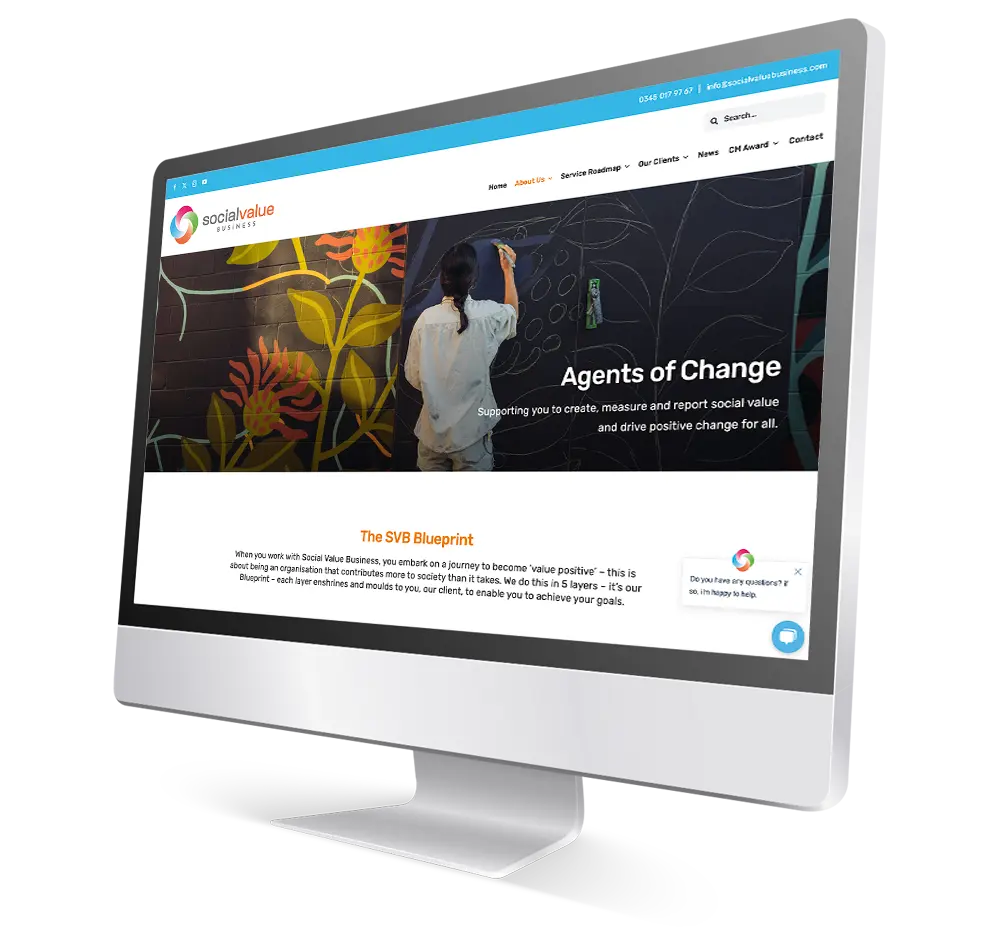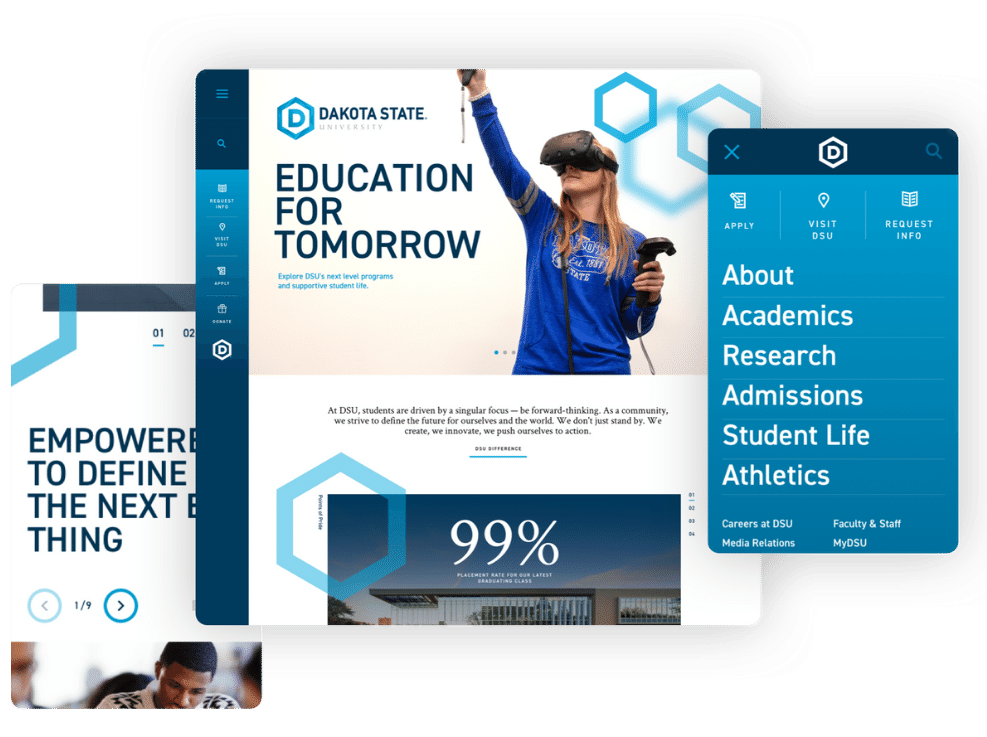Essential Tips for Crafting High-Impact Website Designs
In the world of digital advertising, the design of a site offers as a critical touchpoint for involving potential customers. To produce high-impact site layouts, one need to take into consideration essential elements such as target market understanding, customer experience, and visual pecking order. Each of these components plays a pivotal role in not only attracting site visitors yet likewise in assisting in significant interactions. Yet, the interplay in between these variables can be nuanced and complicated, increasing the inquiry of just how to efficiently balance them to achieve ideal outcomes. Discovering these methods can result in transformative outcomes for your on-line presence.
Understand Your Target Market

To effectively understand your audience, begin by performing demographic evaluations to collect data on age, sex, place, and interests - website design. This info functions as a structure for developing individual characters, which represent the crucial characteristics of your target market. These personas guide decision-making in design aspects and web content method, making sure placement with individual assumptions
Additionally, examining customer actions via tools like Google Analytics can expose just how site visitors communicate with your website. Metrics such as bounce prices and time on web page can highlight areas that need renovation or modification. Customer surveys and responses likewise provide indispensable insights right into preferences and pain points.
Inevitably, a deep understanding of your audience is not simply helpful but essential. It encourages designers to produce even more relevant, enticing, and functional sites that foster a favorable individual experience and drive wanted end results.
Prioritize Customer Experience
When developing a website, prioritizing user experience (UX) is critical to accomplishing both user complete satisfaction and company objectives. A well-crafted UX makes sure that visitors can navigate the website easily, discover the details they need, and involve with material effectively. To achieve this, it is vital to adopt a user-centered layout method that entails understanding customer needs, preferences, and behaviors.
Beginning by carrying out extensive research, including customer studies and functionality testing, to collect understandings right into how customers interact with your site. This data must educate style decisions, ensuring that functions and layouts align with individual expectations. Structured navigating is crucial; visitors must be able to situate details quickly without unneeded clicks or confusion.
In addition, consider the filling speed of your website. A slow-loading website can result in high bounce rates, adversely affecting individual experience. Enhance pictures and scripts to boost efficiency.
Last but not least, guarantee that your internet site is available to all users, including those with handicaps. Adhering to availability standards not just expands your target market but likewise fosters inclusivity. By focusing on UX, you lay the foundation for a successful internet site that fulfills both individual needs and business goals.
Embrace Visual Power Structure
A well-structured aesthetic hierarchy plays a significant role in improving individual experience by directing visitors' attention to one of the most crucial elements of a website (website design). By strategically preparing content, designers can create a clear path for individuals to follow, ensuring they involve with essential info efficiently
To execute aesthetic power structure, beginning by using dimension and scale. Larger aspects normally draw the eye, making them best for headings or phones call to action. Enhance this with contrasting colors that highlight crucial locations, as vibrant hues can produce focal factors that record attention.
Additionally, the placement of aspects on the page is critical. Leading the visitor's look with the layout can be attained by positioning crucial details at the leading or click for info in the facility, where individuals normally start their aesthetic journey. Including whitespace around components can additionally improve clarity, making it much easier for individuals to refine information without really feeling bewildered.
Finally, using typography properly adds to visual hierarchy. Different typeface dimensions, weights, and styles can represent relevance, assisting customers with the content perfectly. By accepting these concepts, designers can create an instinctive experience that fosters involvement and encourages individuals to check out further.
Enhance for Mobile
Mobile optimization is crucial in today's electronic landscape, as a considerable section of web traffic comes from smart phones. To check my blog make certain a seamless individual experience, websites must be created with mobile customers in mind. This involves using receptive website design techniques that adjust the format, photos, and text to fit numerous display sizes while keeping performance and appearances.

Touch targets, such as web links and switches, have to be properly sized, guaranteeing they are conveniently tappable without mistakes. Make certain that types are mobile-friendly by minimizing input fields and utilizing dropdowns where suitable, enhancing the user experience.
Last but not least, examination your website across different mobile phones and internet browsers to recognize any type of concerns that might impact usability. By focusing on mobile optimization, you not just boost user contentment but additionally positively influence Check This Out your website's internet search engine position, therefore bring in even more site visitors and enhancing general involvement.
Implement Strong Branding
A distinct brand not just distinguishes you from rivals however additionally cultivates count on and commitment amongst your audience. This identification should be shown regularly across all electronic touchpoints, including your internet site, social media, and email communications.
Visual components such as logo designs, color design, and typography play an essential function in branding. Choose a color palette that resonates with your target audience and mirrors your brand name personality. Make sure that your logo design is functional and prominently presented on your web site, enhancing brand recognition.
Web content is similarly crucial; your intonation need to line up with your brand name identification, whether it's professional, pleasant, or reliable. Engaging storytelling can even more reinforce your brand, creating a psychological connection with customers.
Conclusion
In verdict, crafting high-impact web site designs demands a multifaceted approach that encompasses comprehending the audience, focusing on user experience, and welcoming aesthetic pecking order. Optimization for mobile gadgets continues to be crucial, together with the implementation of solid branding strategies. By incorporating these aspects, sites can properly involve customers, assist in smooth navigating, and foster psychological links that improve brand identity. Inevitably, adherence to these principles adds to the development of effective and compelling electronic experiences that reverberate with target audiences.
To create high-impact site styles, one need to consider crucial aspects such as target market understanding, customer experience, and visual hierarchy.When developing an internet site, prioritizing customer experience (UX) is extremely important to achieving both individual fulfillment and service goals.Beginning by carrying out complete research, including customer surveys and functionality testing, to collect understandings into just how individuals communicate with your website. To ensure a smooth customer experience, websites must be designed with mobile individuals in mind.In conclusion, crafting high-impact website styles demands a complex strategy that encompasses recognizing the target market, prioritizing individual experience, and welcoming aesthetic pecking order.